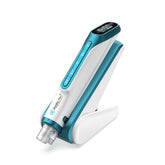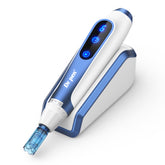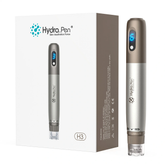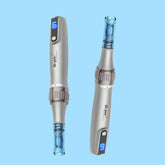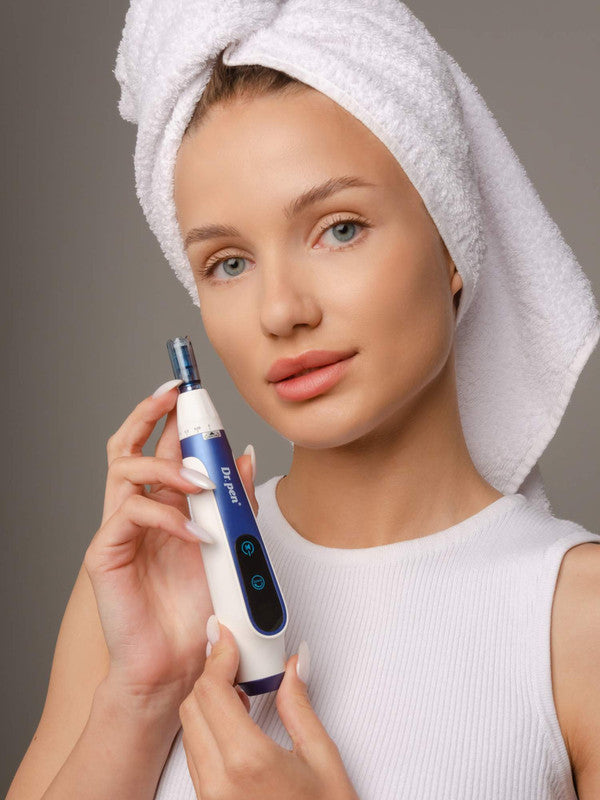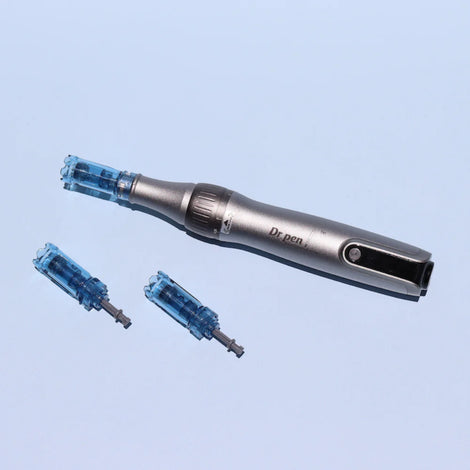Have you heard of microneedling? If so, it might sound scary, but keep an open mind. You might just discover your new favorite skin treatment to age like Halle Berry. It’s time to answer the question: What is microneedling and is it safe?
Microneedling is a procedure during which a professional will make tiny punctures in your skin (don’t worry, they’re not visible) to help your skin create more collagen. If you have scars, sun damage, or wrinkles, microneedling may be an option to help regenerate healthy, younger-looking skin.
But is micro needling safe for your particular skin type? Here’s all you need to know about microneedling, as well as whether or not it’s safe for oily, dry, normal, combination, and sensitive skin types.
What Exactly Is Micro needling?
Microneedling is a cosmetic procedure that allows your physician (a board-certified dermatologist or plastic surgeon typically does the procedure) to make tiny punctures in your skin with surgical-grade needles.
You’ll be numbed with a topical anesthetic before the procedure, so discomfort will be minimal. The tiny wounds the tool makes stimulate a wound healing response in the skin, and the skin produces more collagen as a result.
Your dermatologist will use the tool evenly over the entire area, whether it be your face or body (as we’ll see, microneedling can help in any area where you have scars or stretch marks). The goal is that once the skin heals, it will look firmer and have a better tone and texture.
Since microneedling involves controlled damage to the skin for rejuvenation, it’s similar to a chemical peel or a laser resurfacing procedure. In fact, some people attempt either chemical peels or lasering before going for microneedling.
Microneedling, in comparison to chemical peels, laser resurfacing, or plastic surgery, requires little to no downtime. Microneedling can help:
With microneedling, it’s essential to remember that you may need several sessions to achieve the results you want, regardless of whether you’re targeting scars, stretch marks, or hyperpigmentation.
People Who Qualify for Microneedling
Now that we’ve seen exactly what microneedling is and how it can improve skin tone, texture, and firmness. It’s time to answer the question: is microneedling safe?
The answer is yes! Microneedling is considered to be safe for all skin types. However, some individuals are not suitable for microneedling. These include people with eczema or existing open wounds (such as acne) on the area they want to treat.
Pregnant women are also ineligible for microneedling. Although the practice is safe, it’s not without its risks, and so pregnant women generally aren’t considered for the procedure.
Before your microneedling procedure, your physician will likely ask you to stop taking acne medications and not use certain skincare ingredients or products, such as retinoids. If you’re planning a microneedling procedure, it may be best to speak with a physician so you can prepare accordingly. Certain medications need to be stopped months before the procedure in some cases.
Risks of Microneedling
Microneedling risks are considered to be minor but include pain, infection, swollen lymph glands, cold sore flare-ups and redness, itching, and peeling. Some people may also experience redness, bruising, or bleeding.
Side effects should go away within a few days, but don’t hesitate to follow up with your physician if you have any questions. You should especially seek medical advice if you develop a headache, fever, severe pain, or even hives. These are very uncommon side effects.
Should You Try Microneedling at Home?
So we know professional microneedling is safe. However, some tools mimic professional microneedling that you can buy over-the-counter—so is microneedling safe when done at home?
People often use at-home microneedling tools to make it easier for their skin to absorb certain skincare products rather than generate collagen production.
If you want dramatic results with microneedling, go to a professional. Having professional microneedling done is also safer in addition to being more effective.
Is Microneedling Safe for Darker Skin Tones?
Microneedling has been shown to be safer and more effective than laser resurfacing for Fitzpatrick skin types IV-VI. These include people with olive or light brown skin tones to those with dark brown skin tones. Microneedling may be a good choice for people with darker skin types who struggle with scarring, melasma, or wrinkles.
In fact, microneedling is often considered to be a better form of treatment than lasers for those with darker skin tones. Of course, each person is different, and consulting with a physician experienced in working with people with your skin tone is essential.
Microneedling is a procedure during which a professional will make tiny punctures in your skin (don’t worry, they’re not visible) to help your skin create more collagen. If you have scars, sun damage, or wrinkles, microneedling may be an option to help regenerate healthy, younger-looking skin.
But is micro needling safe for your particular skin type? Here’s all you need to know about microneedling, as well as whether or not it’s safe for oily, dry, normal, combination, and sensitive skin types.
What Exactly Is Micro needling?
Microneedling is a cosmetic procedure that allows your physician (a board-certified dermatologist or plastic surgeon typically does the procedure) to make tiny punctures in your skin with surgical-grade needles.
You’ll be numbed with a topical anesthetic before the procedure, so discomfort will be minimal. The tiny wounds the tool makes stimulate a wound healing response in the skin, and the skin produces more collagen as a result.
Your dermatologist will use the tool evenly over the entire area, whether it be your face or body (as we’ll see, microneedling can help in any area where you have scars or stretch marks). The goal is that once the skin heals, it will look firmer and have a better tone and texture.
Since microneedling involves controlled damage to the skin for rejuvenation, it’s similar to a chemical peel or a laser resurfacing procedure. In fact, some people attempt either chemical peels or lasering before going for microneedling.
Microneedling, in comparison to chemical peels, laser resurfacing, or plastic surgery, requires little to no downtime. Microneedling can help:
- Acne Scars
- Fine lines and Wrinkles
- Melasma
- Stretch Marks
With microneedling, it’s essential to remember that you may need several sessions to achieve the results you want, regardless of whether you’re targeting scars, stretch marks, or hyperpigmentation.
People Who Qualify for Microneedling
Now that we’ve seen exactly what microneedling is and how it can improve skin tone, texture, and firmness. It’s time to answer the question: is microneedling safe?
The answer is yes! Microneedling is considered to be safe for all skin types. However, some individuals are not suitable for microneedling. These include people with eczema or existing open wounds (such as acne) on the area they want to treat.
Pregnant women are also ineligible for microneedling. Although the practice is safe, it’s not without its risks, and so pregnant women generally aren’t considered for the procedure.
Before your microneedling procedure, your physician will likely ask you to stop taking acne medications and not use certain skincare ingredients or products, such as retinoids. If you’re planning a microneedling procedure, it may be best to speak with a physician so you can prepare accordingly. Certain medications need to be stopped months before the procedure in some cases.
Risks of Microneedling
Microneedling risks are considered to be minor but include pain, infection, swollen lymph glands, cold sore flare-ups and redness, itching, and peeling. Some people may also experience redness, bruising, or bleeding.
Side effects should go away within a few days, but don’t hesitate to follow up with your physician if you have any questions. You should especially seek medical advice if you develop a headache, fever, severe pain, or even hives. These are very uncommon side effects.
Should You Try Microneedling at Home?
So we know professional microneedling is safe. However, some tools mimic professional microneedling that you can buy over-the-counter—so is microneedling safe when done at home?
People often use at-home microneedling tools to make it easier for their skin to absorb certain skincare products rather than generate collagen production.
If you want dramatic results with microneedling, go to a professional. Having professional microneedling done is also safer in addition to being more effective.
Is Microneedling Safe for Darker Skin Tones?
Microneedling has been shown to be safer and more effective than laser resurfacing for Fitzpatrick skin types IV-VI. These include people with olive or light brown skin tones to those with dark brown skin tones. Microneedling may be a good choice for people with darker skin types who struggle with scarring, melasma, or wrinkles.
In fact, microneedling is often considered to be a better form of treatment than lasers for those with darker skin tones. Of course, each person is different, and consulting with a physician experienced in working with people with your skin tone is essential.




